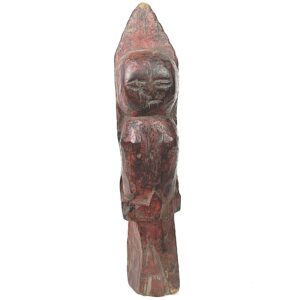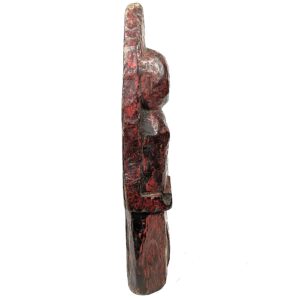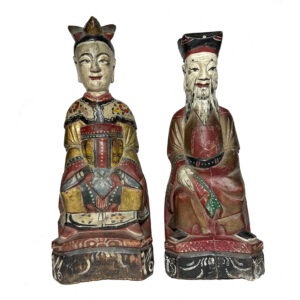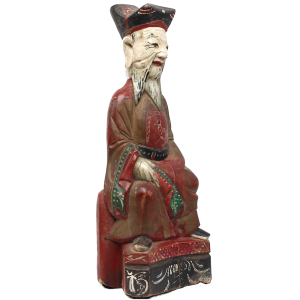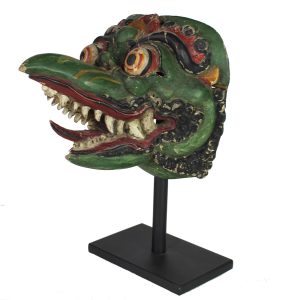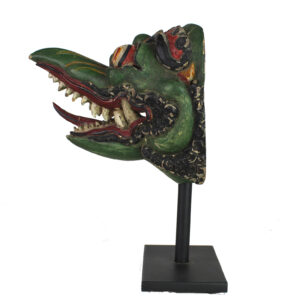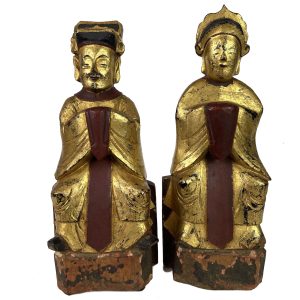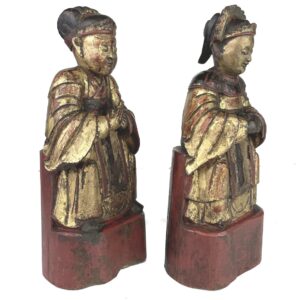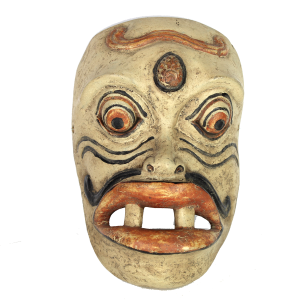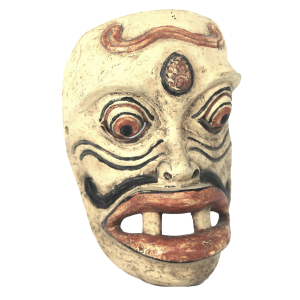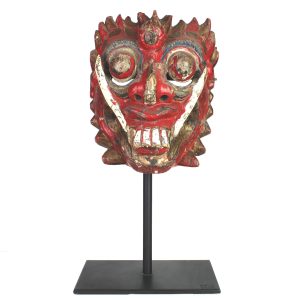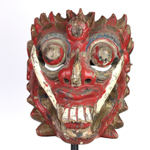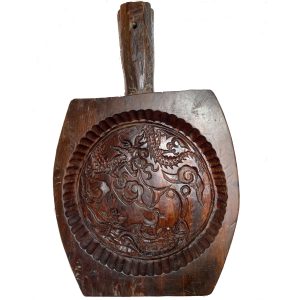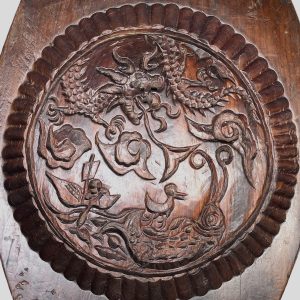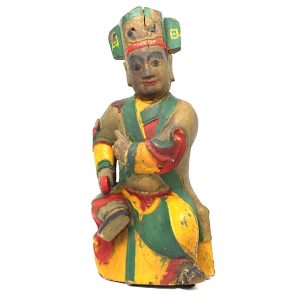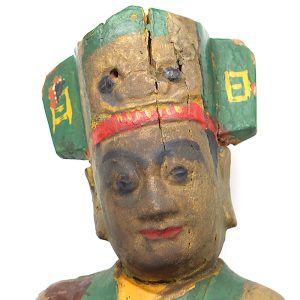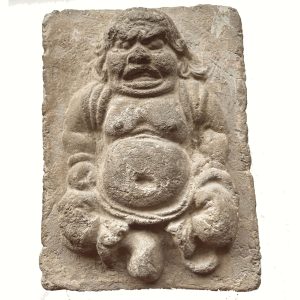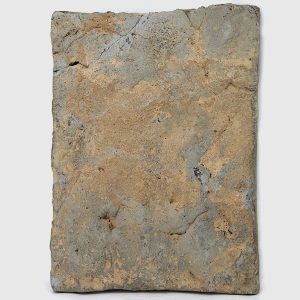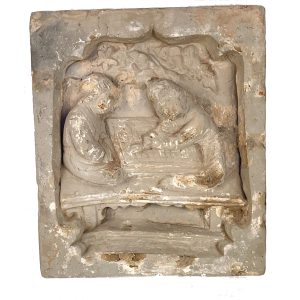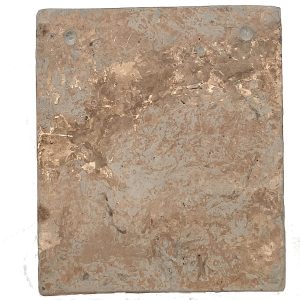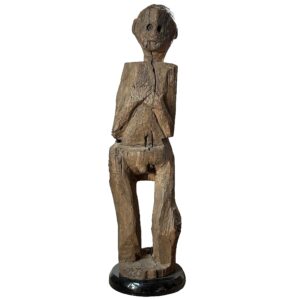Showing 73–84 of 137 results
-
Sale!


$85.00 Original price was: $85.00.$55.00Current price is: $55.00.
Ht: 9..5 ” W: 2″ D:1.5 ” | FREE SHIPPING WITHIN CONTINENTAL U.S.!
This antique carving of a Devi, the Sanskrit word for divine probably was a child’s toy and and a protective item. She has a tikka mark on her forehead, ample breasts – a wish for fertility-, and an upright stance asserting her position as a protective deity. It has been handled so often the wood and paint are extremely smooth with a shiny patina.
-


$785.00
These carvings of the Taoist-Deities Tudi Gong and his wife Tudi Po are from rural Southern China where they were frequently depicted together as house-gods on a home altar or local temple for farmers to pray to for abundant harvests and success in selling their products. Although Tudi Gong is a low ranking deity, he…
-


$650.00
This exceptional polychrome mask (topeng in Java, tapel in Bali) of Jatayu blends Balinese ethnic and folk-art with Hindu cultural traditions. Indonesia was part of the larger Hindu Majapahit Empire (1293-1527), is now a Muslim majority but Bali remains mostly Hindu. Balinese masks are often made from a single piece of local pulai wood whose…
-
Sale!


$625.00 Original price was: $625.00.$375.00Current price is: $375.00.
H: 8.25″ W: 3.125″ D: 2.25″ | FREE SHIPPING!
This Kitchen God and his Wife is posed as streamlined virtual mirror-images and fashioned with a general quality relying on paint rather than deep carving for details. They sit on backless chairs on a plinth, with simplified gold officials’ robes with long color sashes, and well-carved black and gilt head gear. The wife’s face is smooth, generalized and the male face has a more deeply carved surface and painted highlights.
-


$395.00
Balinese masks (tapel in Balinese, topeng in Java), are said to have existed since the 10th century and often are danced in sacred Hindu stories with important moral, ethical, historical and philosophical ideas, This is especially true as many come from ancient Hindu texts like ancient epics the Ramayana, the Mahabharata and the Babad Dalem, the…
-


$875.00
In Bali, Indonesia, Hindu villages have a sacred collection of woodcarvings in the form of Balinese masks (topeng) danced as offerings to the gods with a gamelan percussion orchestra. Balinese dance masks are endowed with magic (tenget) ), especially. the 2 central to Balinese mythology, culture and their past of animism: Rangda and Barong. Barong…
-
Sale!


$425.00 Original price was: $425.00.$215.00Current price is: $215.00.
H: 16.5″ W: 10.5″ D: 2.25″ CALL 213-568-3030 OR EMAIL [email protected] FOR SHIPPING QUOTE
This finely detailed hardwood mold was used to make sweetmeats confections, perhaps mooncakes for the Chinese Autumn Moon Festival. It is covered with deeply carved propitious symbols for marital harmony, sons and successful endeavors: a four clawed dragon for fertility, two ducks symbolizing marital bliss and harmony, one atop a carp for conjugal bliss and achieving noble rank and a boat with a sail for making all this easy sailing. This would be a great accessory or gift (especially for weddings) to spice up any kitchen.
-


$395.00
This image from Guandong wears typical Taoist priest or shaman attire – an undergarment crossed at the neck, an overcoat clasped at the waist and a double-winged high hat centered with an image of a taotie. The taotie is a mystical animal sometimes on the hat of Taoist priests or shamans as a guardian or…
-
Sale!


$475.00 Original price was: $475.00.$325.00Current price is: $325.00.
Ht: 6.875″ W: 5.25” D: 2.25 | FREE SHIPPING WITHIN CONTINENTAL U.S.!
This fascinating thick Song pottery brick is a low-fired depiction of a dwarf foreigner with a rotund belly, a large head and nose, an open mouth and abnormal features. The Chinese believed dwarfs could ward off evil spirits and sickness, attract peace and blessings (fu) and were very wise. Images of dwarfs became so popular, some were produced in numbers.
-


$495.00
H: 11” W: 9.5” \ D: 2” | FREE SHIPPING WITHIN CONTINENTAL U.S.
As part of the The Song dynasty cultural expansion, government and public buildings and tombs were built with interior walls decorated with earthenware unglazed mold-made brick tiles. This fanciful vibrant tile with a scalloped frame portrays two people playing a board game called wéiqí which originated in China over 2500 years ago. It is the world’s oldest and most complex board game still played.
-


$465.00
This late Song dynasty earthenware ceramic brick tile portrays a couple sitting behind a banquet table with foods placed in front of them. On the right are two figures, one of whom points to a stylized image of a bat flying in the sky.
-
Sale!


$1,900.00 Original price was: $1,900.00.$1,100.00Current price is: $1,100.00.
H: 42″ D: 12″ | CALL 213-568-3030 OR EMAIL [email protected] FOR SHIPPING INFORMATION
This carved hardwood human figure is an honored Dyak ancestor effigy (hampatong) used to protect villages, people, graves, longhouses and paths to rivers and rice fields. Like most Dyak standing figures, this one is carved in comparatively low relief with arms held placed at the heart and chest and/or sometimes covering the covering the genitals and its facial and bodily features have deteriorated a bit, are rather shallow but are recognizable. It comes on a black Lucite base and was purchased in Bali in the mi 1970s. This piece is featured in a VA instagram post.
End of content
End of content

